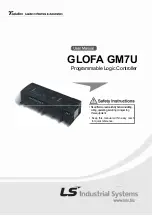
826
CE
A18–A0
OE
WE
I/O7–I/O0
V
IH
t
acc
t
ce
t
oe
t
oe
t
ce
t
acc
t
oh
t
df
t
df
t
oh
Address stable
Address stable
Figure 22-21
CE
and
OE
Clock System Read Timing Waveforms
22.11.4
Auto-Program Mode
1. In auto-program mode, 128 bytes are programmed simultaneously. This should be carried out
by executing 128 consecutive byte transfers.
2. A 128-byte data transfer is necessary even when programming fewer than 128 bytes. In this
case, H'FF data must be written to the extra addresses.
3. The lower 7 bits of the transfer address must be low. If a value other than an effective address
is input, processing will switch to a memory write operation but a write error will be flagged.
4. Memory address transfer is performed in the second cycle (figure 22-22). Do not perform
transfer after the third cycle.
5. Do not perform a command write during a programming operation.
6. Perform one auto-program operation for a 128-byte block for each address. Two or more
additional programming operations cannot be performed on a previously programmed address
block.
7. Confirm normal end of auto-programming by checking I/O6. Alternatively, status read mode
can also be used for this purpose (I/O7 status polling uses the auto-program operation end
decision pin).
8. Status polling I/O6 and I/O7 pin information is retained until the next command write. As long
as the next command write has not been performed, reading is possible by enabling
CE
and
OE
.
Содержание H8S/2631
Страница 28: ...xviii Appendix G Package Dimensions 1154 ...
Страница 341: ...316 Transfer SAR or DAR DAR or SAR Block area First block Nth block Figure 9 8 Memory Mapping in Block Transfer Mode ...
Страница 918: ...905 ø DREQ0 DREQ1 tDRQS tDRQH Figure 25 19 DMAC DREQ Input Timing ...
Страница 955: ...943 A 2 Instruction Codes Table A 2 shows the instruction codes ...
















































